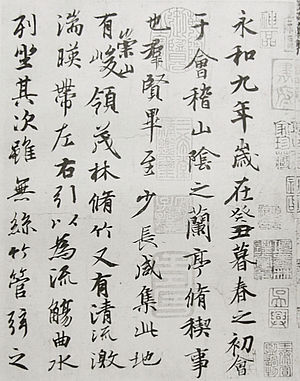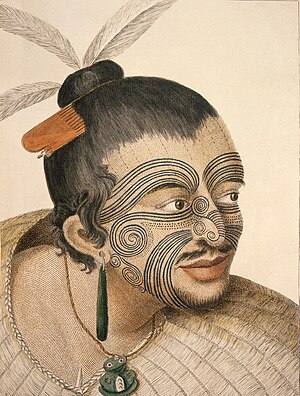 Image via Wikipedia
Image via WikipediaChinese calligraphy is an antiquated art form stretching back to approximately 3000 years in the past. This sort of inscription is alleged to be a type of abstract art in itself. Several masters right through Chinese history have left behind their particular unique understanding of the Chinese characters. It was Tu Mang who collected all of it along with form identification and variations. He established names for the techniques used to specify the words. As an example, a cheery style has an undefined or unknown direction. On the other side, a carefully executed sort insists on a extremely careful execution and thought behind the work. Mysterious is to apply your imagination. You will discover 120 discrete expressions utilised in Chinese calligraphy, extremely a lot of born by wonderful masters of the past.
This charming and peaceful art form called Chinese calligraphy is a greek word meaning beautiful writing and can be seen everywhere from art galleries to bistros, and tattoo shops. This takes me back to my search for an excellent Chinese word. As soon as I had the words I desired to immortalize on my back, after learning so extremely much more about Chinese calligraphy, it occurred to me I would must select a form too. What type of brush strokes would best stand for the significance of the words I had selected? I may go with a classic, conventional style used in ancient times or maybe something called the grass style, which appeared more whimsical to me. I hadn't realized the depth of expression tied up not just in looking for a tattoo, however the specific essence, disposition, and layers upon layers of meaning connected with this brilliant art form.
Beyond the design, there are phrases, and also the writing itself there is traditional, vertical or modern horizontal. I may choose quotes, personality idioms, or even 7 personality extractions from well-known poems. I can get my Christian name or my children’s names translated into Chinese or surround the words with different kinds of Asian art. The more I searched on Chinese calligraphy, the more infatuated I became of the work, and yet I was not getting any closer to choosing a tattoo because, being incredibly honest, every word or quotation prompted a different sentiment in me. There were simply far also many I identified with on a deep and spiritual level. In the meanwhile, I shall have to consider my final choice of Chinese caligraphy extremely carefully indeed.
![Reblog this post [with Zemanta]](http://img.zemanta.com/reblog_e.png?x-id=af5fd7fa-6ca1-4fea-b1b3-5864ab7a721e)

![Reblog this post [with Zemanta]](http://img.zemanta.com/reblog_e.png?x-id=cf7b7ec6-5ac5-4fd9-bca4-faeaf4ac4b6f)